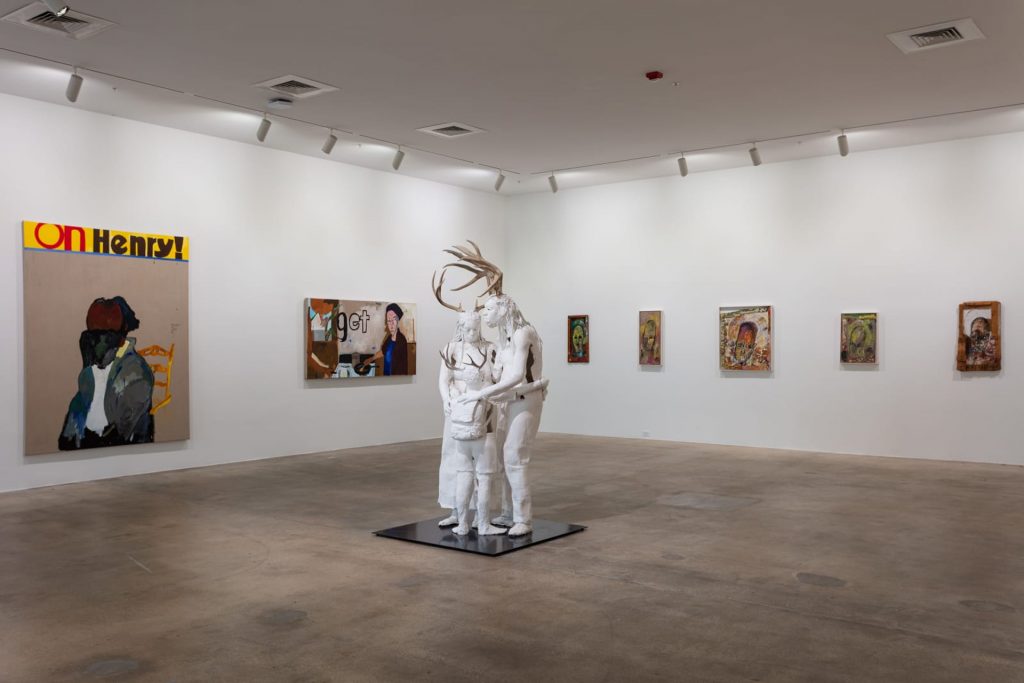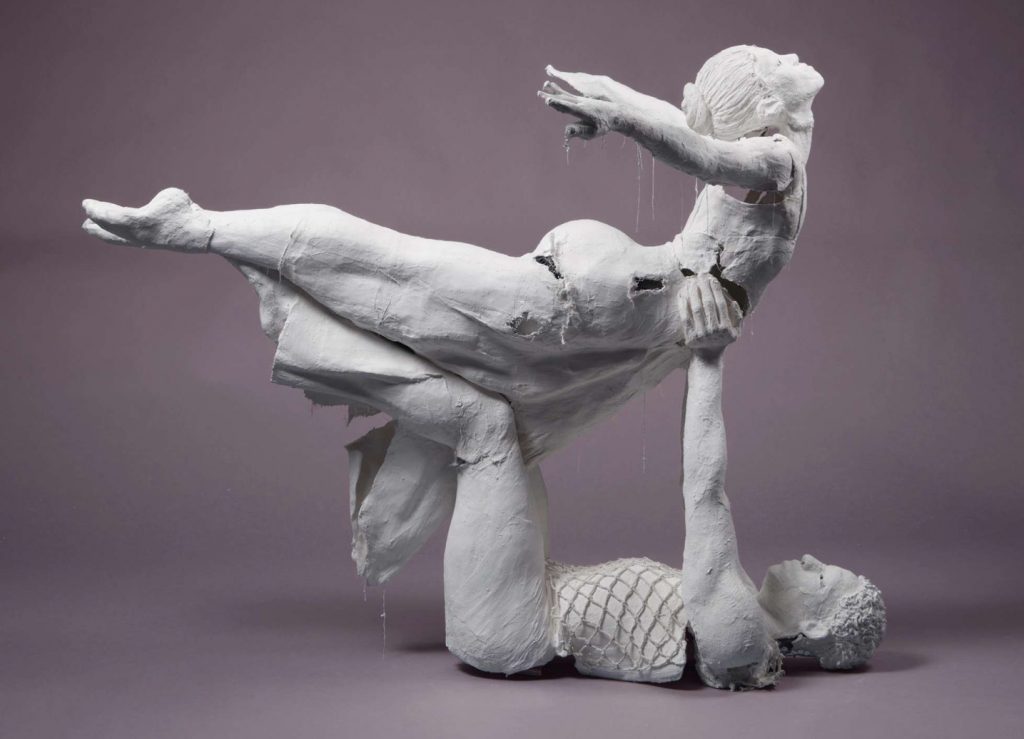THIS RENO-BORN AND LOS ANGELES-BASED SCULPTURE AND MULTIMEDIA INSTALLATION ARTIST USES THE POWER OF VISUAL STORYTELLING TO MAKE THUNDERING STATEMENTS ON POIGNANT SOCIAL ISSUES WITHOUT EVER SPEAKING A WORD
BY EVAN MONROE
It isn’t often that world-renowned artists hail from the relatively provincial smaller town environs of a place like Reno, Nevada. A quick internet search into the most famous locations to visit in Reno will yield names like Truckee River Whitewater Park, the National Automobile Museum, Animal Ark, and the Greater Nevada Field. What you will not find is anything indicating a roiling hotbed of avant-garde artistic talent. However, Reno can take great pride in its raising of the venerated sculpturist Karon Davis.
Now based in Los Angeles, Davis is recognized for her fascinating and resourceful use of materials like chicken wire, plaster strips, glass, and other found objects. She uses this seemingly random grab bag of physical media to powerfully comment on themes of race and identity in modern life. Her work has been described as deeply emotive and intensely personal, drawing from universally understood ideas about what it means to be alive. A common theme in her work is the use of mannequins to create surprisingly life-like figures, cast from the bodies of her family, friends, and the artist herself.
As for themes, the artist’s own site describes them best: “Drawing on her background in theater and ¬ lm, Davis creates haunting tableaux inhabited by protagonists both historical and imagined. The material reflects her longtime interest in ancient Egyptian mummi¬cation practices, using wrapping to memorialize different bodies and their complex histories.”

In viewing her works, one might get a sense that Davis is fascinated by the conation of the beautiful and the grotesque. Several of her pieces are displays of artistic movement via athletic greatness. Balletic motion figures show up in multiple works, but in each, there is an underpinning of decay. Plaster forms are broken or feature strings hanging down that mirror strands of broken spider webs. Appropriately, one of her most famous works is called “Beauty Must Suffer.” It pictures a ballerina in a difficult downward pose, with a literal pyramid made of disused mannequin parts and pointe shoes behind her.

Her work shows a special fascination with the Greek mythological story of Narcissus, the god so prepossessed with his own beauty that he unknowingly fell in love with a mirror image of himself in a pool of water. Davis has crafted several works that reference the mythological figure. “Portrait of Narcissus” and “Echo & Narcissus: The Embrace” are two of her better-known creations, both exploring the concept of beauty as both an act of creation and a means of self-destruction.
Ruminating on why she’s drawn to the ballerina, Davis said, “I think I came out of the womb and my parents handed me a tap shoe, ballet shoes, and sheet music. You’re pushing your body to the extreme [in ballet]. You’re ¬fighting every single day to be the best. I mean, their feet are literally bleeding sometimes, but they make it look so effortless. That air that people put on as ballerinas, everyday people do, too. We all sometimes have to put on that air of being perfect and beautiful when our feet are bleeding or our heart hurts.”
Karon Davis
@karondavis